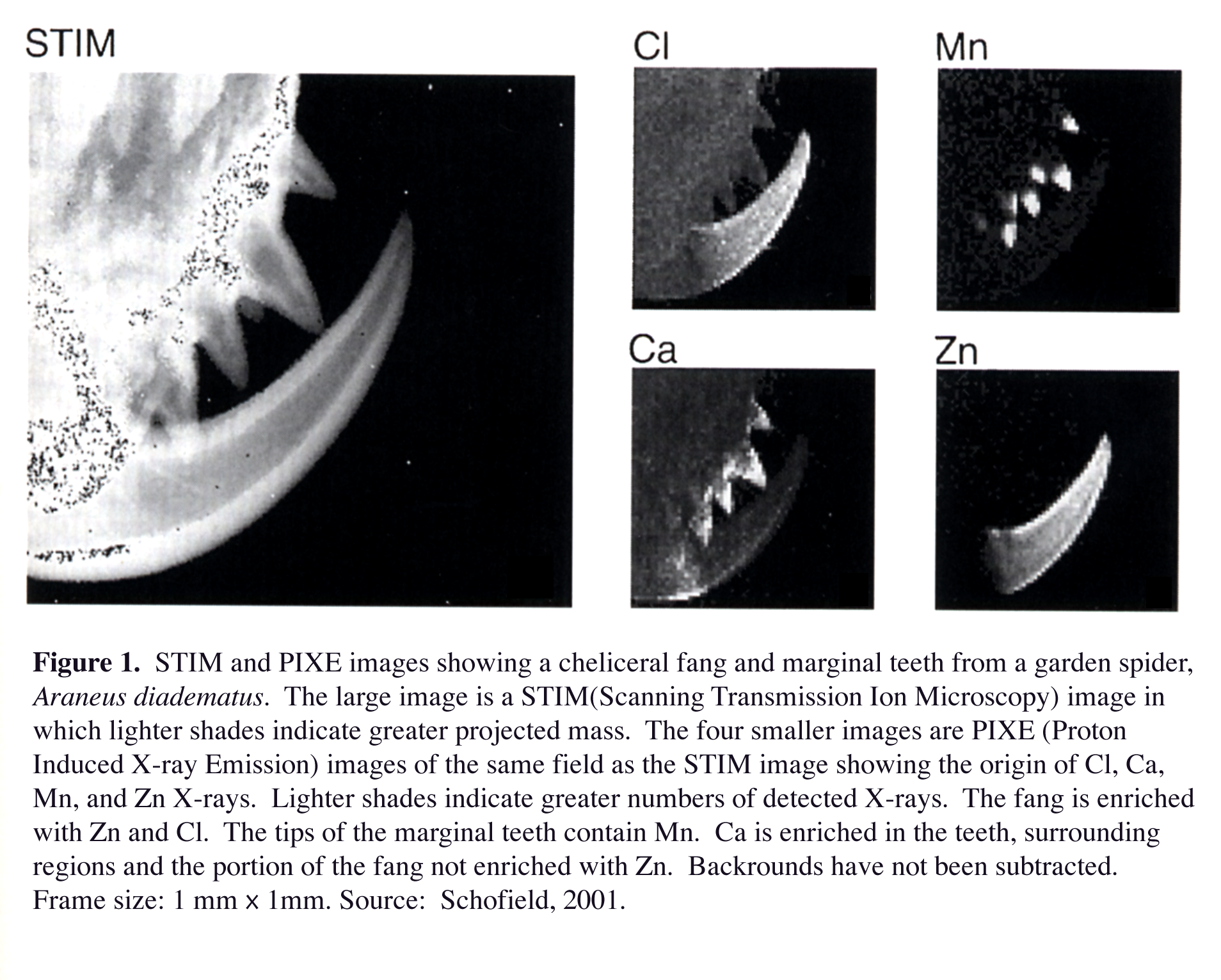Education
Project Description :
The jaws, leg claws, stings and other "tools" of a large fraction of arthropods, some worms and members of other phyla, contain extraordinary amounts of heavy metals (e.g. Zn, Mn, Cu) and halogens (Br, Cl). Although the concentrations reach 25% of dry mass, the tissue is not filled with a biomineral, like calcified tissues are. Instead, metal-halogen biomaterials appear to be a distinctly different system that is more widely employed among small organisms. Very little is known about these metal-halogen biomaterials, though their main counterpart in larger organisms, calcification, is thought to be of such importance that it is responsible for major adaptive radiations in evolutionary history.
In our previous project, we published the first comprehensive picture of the development and ultrastructure of Zn-enriched "tools", showing that Zn was deposited very late in cuticular development, and that Zn-rich cuticle contained a unique network of nanoscale canals, through which Zn was apparently deposited. We showed that any separate biomineral phase is amorphous and on a scale smaller than a few nanometers, much smaller than the scale of known structural biominerals. Based on chemistry, ontogeny and phylogenetic distribution, we argued that this system is likely to have evolved very early, before the divergence of insects and chelicerates.
In addition, we showed that the hardness of the mandibular teeth of leaf-cutting ants nearly triples as Zn is incorporated during early adult life. We suggested that this Zn-correlated hardness change is responsible for the differences in leaf-processing behavior between young and older adults.
Background:
Metal-halogen-enriched structures have only recently been identified, probably because the metal-bearing material is not visually distinct from surrounding tissue and suitable detection methods were not available. Bryan and Gibbs (1979) were the first to note structural accumulations of these metals, which they found in polychaete annelids. Zn was found in the jaws of nereids and Cu in the jaws of glycerids in concentrations that did not epend on the environmental levels (Bryan and Gibbs 1979; Gibbs and Bryan 1980a,b,c). The authors suggested that these metals might improve the mechanical properties of jaws. Subsequently Hillerton and Vincent (1982) and Hillerton et al. (1984) detected Zn and Mn near the cutting edge of the mandibles of several orders of herbivorous insects, after an initial finding that the cutting surface of dry locust mandible was harder than surrounding cuticle (Hillerton et al., 1982). In all of the above cases, the metals were identified using analytical chemical and electron microscopic techniques and quantified by solubilization and atomic absorption spectroscopy. Because of the spatial imprecision of the chemical methods, these studies could only hint at the extreme magnitudes of the metal concentrations in localized regions.
The development of high-energy ion microscopy has facilitated measurement of local metal concentrations and revealed the complex patterns of metal deposition in a diversity of organisms and structures, including structures other than mouthparts.
High-energy ion microprobes are analogous to electron microprobes but employ a beam of ions instead of electrons. Ion microprobes penetrate 2 or 3 orders of magnitude deeper than electron microprobes, penetrating completely through many specimens, and enabling element contents to be determined with little or no sectioning. Images produced by the high-energy ion microprobe are demonstrated in Figure 1 below. 
